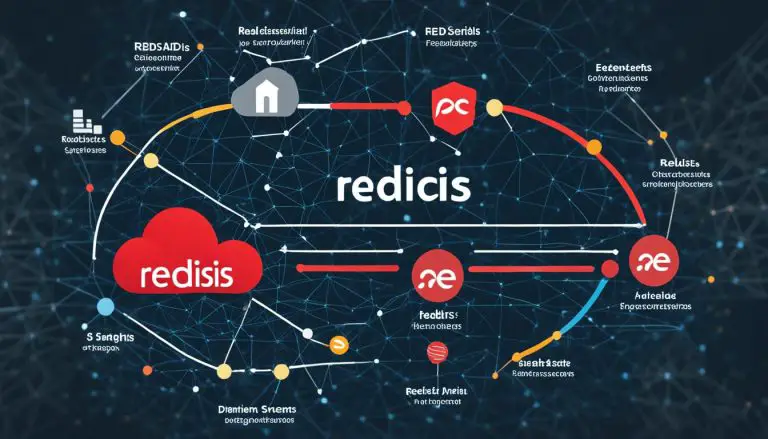Exploring Cloud Storage: What is Google Drive
Hello readers, in this article I will be discussing Google Drive, one of the most popular cloud storage services available. If you’re wondering what cloud storage is and how Google Drive can benefit you, then you’ve come to the right place.
Google Drive is an online storage solution provided by Google. It allows users to store their files in the cloud and access them from anywhere with an internet connection. Whether you have important documents, photos, or videos, Google Drive provides a secure and convenient way to store and manage your files. It offers a generous amount of free storage, and if you need more, there are various pricing plans available.
One of the key advantages of Google Drive is its integration with other Google tools such as Google Docs. With Google Drive, you can create, edit, and share documents easily. This collaboration feature makes it an excellent choice for individuals and teams working on projects together. In addition, Google Drive automatically backs up your files, ensuring that you never lose your important data.
Key Takeaways:
- Google Drive is a cloud-based storage service that allows you to store and access files online.
- It integrates seamlessly with other Google tools such as Google Docs, making collaboration easy.
- Google Drive provides automatic backup, ensuring that your files are safe and accessible.
- It offers a generous amount of free storage and various pricing plans for additional storage needs.
- Google Drive is a reliable and convenient solution for file storage and sharing.
The Benefits of Google Drive
Google Drive offers several advantages for individuals and businesses, making it a popular choice for cloud storage. Let’s explore the key benefits:
Centralized File Storage
With Google Drive, you can say goodbye to physical storage devices and enjoy the convenience of a centralized location for storing all your files. Whether it’s documents, photos, or videos, you can easily upload and organize your files in one secure place.
Collaboration Made Easy
One of the standout features of Google Drive is its seamless collaboration capabilities. Multiple users can work on the same file simultaneously, making it ideal for group projects, team collaborations, or even just sharing files with friends and family. Say goodbye to the hassle of emailing files back and forth.
Accessibility from Anywhere
With Google Drive, you have the freedom to access your files from any device with an internet connection. Whether you’re on your computer, smartphone, or tablet, your files are just a few clicks away. Need to pull up that important document during a meeting? Google Drive has got you covered.
Automatic Backup
Ever experienced the frustration of losing important files due to device failure or data corruption? With Google Drive, you don’t have to worry about that anymore. It offers automatic backup, ensuring that your files are securely stored in the cloud, ready to be restored whenever you need them.
These are just a few of the many benefits that Google Drive brings to the table. So why wait? Start experiencing the convenience and peace of mind that Google Drive offers today!
Note: The image above illustrates the benefits of Google Drive and emphasizes the advantages of cloud storage, collaboration, accessibility, and automatic backup.
How Does Google Drive Work?
To use Google Drive, you need to create or sign in to a Google account. Once logged in, you can access Google Drive through the web browser or by downloading the Google Drive application on your devices.
Google Drive synchronizes files and folders across devices, allowing you to easily access your files from different devices. Whether you’re on your computer, smartphone, or tablet, you can access your files and documents with just a few clicks.
You can upload files from your computer directly to Google Drive, or you can create new files within Google Drive itself using tools like Google Docs, Sheets, and Slides. These tools provide a seamless and intuitive way to create and edit documents in real-time.
Sharing files with others is also effortless with Google Drive. You can easily share files and folders with specific individuals or even entire teams. You have full control over the permissions you set for each file, allowing you to specify whether others can edit, view, or comment on your files.
Google Drive’s powerful file synchronization ensures that any changes made to your files, whether it’s on your computer or mobile device, are automatically updated across all your devices. This feature ensures that you always have the most up-to-date version of your files at your fingertips.
And now, let’s take a closer look at how Google Drive’s integration with your Google account works. By linking your Google account to Google Drive, you gain seamless access to all the files and folders stored in your Drive directly from other Google services. This integration streamlines your workflow, making it easier to collaborate and share information across various Google applications.
With Google Drive, you can experience the benefits of cloud storage and file management in a user-friendly and convenient way. It’s time to embrace the power of Google Drive and take control of your digital files.
Features and Pricing of Google Drive
Google Drive offers a range of features that cater to the needs of both personal and business users. For personal users, Google Drive provides 15 GB of free storage, allowing individuals to store their files securely in the cloud. With this generous storage capacity, you can easily store and access your documents, photos, and videos from anywhere, at any time.
For businesses, Google Drive offers flexible storage plans to suit different requirements. With larger storage capacities and additional features, such as shared drives for teams, video and voice conferencing, and centralized administration, businesses can enhance their productivity and collaboration. These business plans start at $12 USD per user per month, with a 1-year commitment, providing organizations with the storage they need to grow and thrive.
It’s worth noting that Google also offers a subscription plan called Google One. With Google One, personal account users can enjoy additional storage capacity beyond the free 15 GB, providing even more space for your files, photos, and videos.
Integration with Google Apps
As part of Google’s suite of productivity tools, Google Drive seamlessly integrates with other Google Apps such as Google Docs, Google Slides, and Google Sheets. These applications provide users with a comprehensive office suite that allows them to create and edit documents, presentations, and spreadsheets directly within the Google Drive platform.
With the integration of Google Docs, Google Slides, and Google Sheets, users can collaborate in real-time on their projects. Multiple users can work on the same document simultaneously, making it easy to collaborate and share ideas. This level of collaboration enhances productivity and ensures that everyone is on the same page.
Furthermore, Google Drive’s file conversion capabilities enable users to save, edit, and share files in Microsoft Office formats. This compatibility allows smooth collaboration between users who prefer different office suites, making it convenient for organizations with diverse software preferences.
The streamlined integration between Google Drive and Google Apps provides users with a seamless experience for document creation, editing, and sharing. Whether it’s working on a shared presentation or collaborating on a spreadsheet, Google Drive’s integration with Google Apps enhances efficiency and promotes effective collaboration.
Security and Privacy of Google Drive
When it comes to protecting your data, Google Drive takes security and privacy seriously. With robust measures in place, Google Drive prioritizes keeping your files safe and confidential.
Data uploaded to Google Drive is encrypted using the Transport Layer Security (TLS) standard, both in transit and at rest. This means that your files are protected not only when they are being transferred over the internet but also when they are stored on Google’s servers.
In addition to encryption, Google Drive offers two-factor authentication (2FA) to enhance the security of your account. By enabling 2FA, you add an extra layer of protection that requires you to provide a second form of verification, such as a code sent to your mobile device, when logging in.
“Google Drive provides secure data encryption and two-factor authentication for enhanced privacy and protection.”
Google Drive is also designed to comply with industry regulations and standards to safeguard sensitive data. For example, it meets the requirements of the Health Insurance Portability and Accountability Act (HIPAA), which ensures the privacy and security of healthcare information.
Furthermore, Google Drive enables you to have control over sharing permissions, allowing you to determine who can access your files and collaborate with you. This gives you the flexibility to share files securely with specific individuals or groups, ensuring that your data remains confidential.
Contents of the current section:
- Data encryption using Transport Layer Security
- Two-factor authentication for added security
- Compliance with industry regulations, like HIPAA
- Control over sharing permissions
How does data encryption work in Google Drive?
Data encryption in Google Drive involves using strong algorithms to scramble your files, making them unreadable without the encryption key. This ensures that even if an unauthorized party gains access to your data, they won’t be able to understand its contents.
Encryption is applied both while your files are in transit, meaning when you upload or download them, and when they are at rest, stored on Google’s servers. This comprehensive encryption ensures that your files are protected at all times.
Cloud Storage Overview
Cloud storage is a revolutionary method of computer data storage that offers numerous advantages for individuals and businesses alike. In this section, we will explore the concept of cloud storage, its benefits, and its relevance in today’s digital landscape.
What is Cloud Storage?
Cloud storage involves storing digital data on off-site servers maintained by a third-party provider. Instead of relying on local storage devices, data is securely stored and accessed using the internet. This eliminates the need for organizations to maintain their own data centers, reducing capital expenditures and operational complexities.
Advantages of Cloud Storage
One of the key advantages of cloud storage is its scalability. Organizations can easily expand or reduce their storage capacity as their data needs evolve, ensuring cost-efficiency and flexibility. Additionally, cloud storage allows for off-site data storage, ensuring that data remains safe and accessible even in the event of a local hardware failure or natural disaster.
Cloud storage also offers seamless remote access to data, enabling users to retrieve and modify files from any location via an internet connection. This level of accessibility enhances collaboration and productivity, as team members can work on shared files in real time, regardless of their physical location.
“Cloud storage provides scalable and cost-efficient solutions for storing and accessing data, which positively impacts organizational productivity and overall operational efficiency.” – Industry Expert
Cost-Efficiency of Cloud Storage
Cloud storage can significantly reduce costs associated with maintaining physical storage infrastructure. By leveraging the infrastructure and expertise of third-party providers, organizations can avoid the upfront costs of purchasing and maintaining their own servers and data centers. Monthly subscription-based pricing models make it easier for organizations to budget and allocate resources effectively.
Visual Representation
To illustrate the concept of cloud storage, take a look at the image below:

The image above depicts the seamless integration of cloud storage into the digital environment, offering scalability, off-site data storage, and cost-efficiency.
In the next section, we will dive deeper into the different types of cloud storage and their respective use cases.
Types of Cloud Storage
When it comes to cloud storage, there are several different models available to suit various needs and preferences. Understanding the differences between these models can help organizations make informed decisions about where and how to store their data. The main types of cloud storage include:
1. Public Cloud Storage
Public cloud storage involves storing data in the data centers of a service provider that are shared by multiple organizations. This model offers flexibility and cost-effectiveness, as organizations can pay for the storage they need without the need for upfront infrastructure investments. Public cloud storage providers, such as Google Cloud Platform and Amazon Web Services, offer secure and scalable storage solutions.
2. Private Cloud Storage
Private cloud storage, on the other hand, allows organizations to utilize their own servers and data centers to store data within their own network. This model provides organizations with more control and security, as they have dedicated resources for their data storage needs. Private cloud storage is suitable for organizations with strict compliance requirements or sensitive data that needs to be protected.
3. Hybrid Cloud Storage
Hybrid cloud storage combines both public and private cloud models, giving organizations the flexibility to store data in multiple environments. This allows organizations to take advantage of the cost-effectiveness and scalability of public cloud storage while keeping sensitive or critical data in their private cloud. Hybrid cloud storage offers a balance between control, security, and cost-efficiency.
4. Multicloud Storage
Multicloud storage involves using multiple cloud service providers for different storage requirements. Organizations may choose to use different cloud providers for specific applications or workloads based on factors such as cost, performance, or geographic proximity. Multicloud storage allows organizations to leverage the strengths of different providers and avoid vendor lock-in.
Each type of cloud storage has its own advantages and considerations, and organizations should evaluate their specific needs and goals when choosing the most suitable model. It’s also worth noting that organizations can utilize a combination of these cloud storage models to create a hybrid or multicloud storage strategy tailored to their requirements.
Use Cases for Cloud Storage
Cloud storage offers a wide range of use cases, making it a versatile solution for various business needs. Let’s explore some of the key applications of cloud storage:
Data Backup
One of the primary use cases for cloud storage is data backup. By storing copies of important files in the cloud, organizations can ensure the safety and accessibility of their data. Cloud storage provides a secure location with redundant infrastructure, protecting against data loss due to hardware failures, natural disasters, or human errors.
Archiving and Records Management
Cloud storage is an ideal solution for archiving old data and maintaining records for governance and compliance purposes. Organizations can securely store and easily retrieve historical data without the need for physical storage spaces. With advanced search and retrieval capabilities, cloud storage simplifies records management and ensures regulatory compliance.
Disaster Recovery
In the event of a disaster, such as a fire, flood, or cyberattack, cloud storage plays a crucial role in disaster recovery. By replicating data to geographically dispersed data centers, organizations can quickly recover their data and continue operations without significant disruptions. Cloud storage minimizes downtime and enables business continuity in times of crisis.
Data Processing and Analytics
Cloud storage provides a scalable and flexible infrastructure for data processing and analytics. By leveraging the processing power of cloud platforms, organizations can efficiently analyze large datasets, extract valuable insights, and make data-driven decisions. Cloud storage enables seamless integration with analytics tools and facilitates the processing of big data workloads.
Content Delivery
Cloud storage also plays a vital role in content delivery. With its global network of servers, cloud storage enables fast and reliable distribution of media files, websites, and other digital content. Content delivery networks (CDNs) leverage cloud storage to cache and serve content from edge locations, ensuring optimized performance and improved user experience.
“Cloud storage offers a wide range of use cases, including data backup, archiving, disaster recovery, data processing, and content delivery. It provides a reliable and scalable infrastructure for organizations to protect and leverage their data effectively.”
Conclusion
In conclusion, Google Drive is a versatile cloud-based storage service that offers a wide range of benefits for individuals and businesses. By providing a secure and convenient platform for file storage, access, and collaboration, Google Drive has become a go-to solution for users of all kinds. With seamless integration with other Google Apps, users can effortlessly create, edit, and share files within the Google Drive ecosystem.
Not only does Google Drive offer ample storage capacity, but it also ensures file accessibility from any device with an internet connection. Whether it’s for personal use or business needs, Google Drive simplifies the storage and sharing of files by eliminating the need for physical storage devices and facilitating real-time collaboration.
Moreover, Google Drive prioritizes security and privacy, employing advanced encryption techniques and offering two-factor authentication. Users have control over file sharing permissions, enhancing data protection. This makes Google Drive a reliable and secure cloud storage option.
In summary, Google Drive empowers users to leverage the power of cloud storage, enabling them to store, access, and collaborate on files with ease. With its robust features, seamless integration, and focus on security, Google Drive stands out as a trusted and efficient solution in the realm of online file storage and sharing.
FAQ
What is Google Drive?
Google Drive is a cloud-based storage service that allows users to store and access files online.
How does Google Drive work?
Google Drive works by integrating with a Google account, syncing files and folders across devices, and providing tools for file creation and sharing.
What are the benefits of Google Drive?
The benefits of Google Drive include centralized file storage, collaboration capabilities, accessibility from any device, and automatic backup.
What features does Google Drive offer?
Google Drive offers features such as file creation, editing, and sharing, as well as different storage plans and integration with other Google Apps.
How much does Google Drive cost?
While personal users receive 15 GB of free storage, business users can choose from various pricing plans depending on their needs.
How does Google Drive integrate with other Google Apps?
Google Drive seamlessly integrates with apps like Google Docs, Google Slides, and Google Sheets, enhancing collaboration and productivity.
How secure is Google Drive?
Google Drive prioritizes security and privacy, with data encryption, two-factor authentication, and compliance with industry regulations.
What is cloud storage?
Cloud storage is a mode of computer data storage that allows digital data to be stored on off-site servers maintained by a third-party provider.
What are the types of cloud storage?
The types of cloud storage include public cloud storage, private cloud storage, hybrid cloud storage, and multicloud storage.
What are the common uses for cloud storage?
Cloud storage is commonly used for data backup, archiving, disaster recovery, and tasks that leverage the availability and scalability of cloud infrastructure.
Source Links
- About the Author
- Latest Posts
Janina is a technical editor at Text-Center.com and loves to write about computer technology and latest trends in information technology. She also works for Biteno.com.






